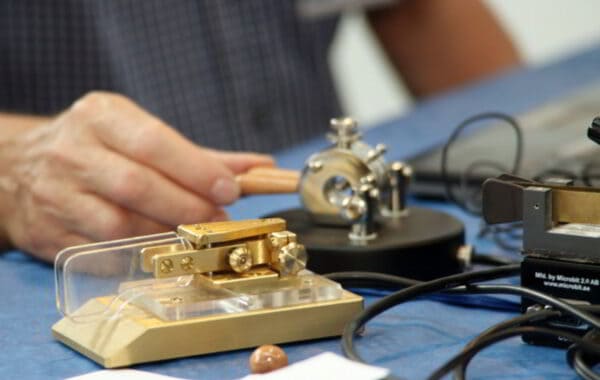Morse Telegraphy
In the mid-1830s, Samuel F. B. Morse initiated in the form of the development of the Morse telegraphy the age of electrical communications. By means of shorter and longer signalising elements messages could be sent as so-called Morse signals without materials, at first only wire-bound and then, from the end of the 19th Century, without wires via radio waves, the whole world over.
For a period of ca. seventy years telecommunication was only possible by way of transmission methods using the Morse code. The Morse alphabet, in the form still officially and globally widespread to this day, was invented a good 150 years ago by the German Clemens Gerke.
This art of broadcasting messages by way of Morse telegraphy was and still is only possible if one has specialist knowledge and skills. It is a type of intercultural form of culture and communication that overcomes the barriers of time and space. The transmission of messages by way of the Morse code is nowadays no longer necessary for technological, economic and military reasons. But in the shape of the amateur radio enthusiasts there does still exist a circle of persons who are dedicated to passing on the art of Morse.
In amateur radio, the rules and linguistic customs from Morse telegraphy are handed down and the function, significance and application of Morse telegraphy are brought to life in our day and age.
Source: Deutsche UNESCO Commission

